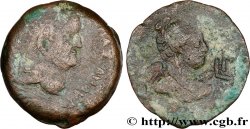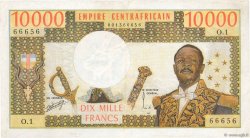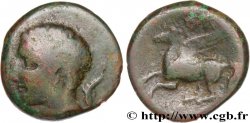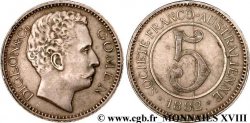v27_0513 - VESPASIANO Denier
MONNAIES 27 (2006)
Precio de inicio : 1 200.00 €
Valoración : 1 900.00 €
lote sin vender
Precio de inicio : 1 200.00 €
Valoración : 1 900.00 €
lote sin vender
Tipo : Denier
Fecha: 70
Nombre del taller / ciudad: Roma
Metal: plata
Milésimas de pureza : 900 ‰
Diámetro: 18 mm
Eje de acuñación: 6 h.
Peso: 2,99 g.
Grado de rareza: R2
Comentarios sobre el estado de conservación:
Très beau portrait, d’une grande beauté, mais peu réaliste. Revers très légèrement décentré. Jolie patine grise avec des reflets dorés
N° en los catálogos de referencia :
Pedigrí:
Cet exemplaire provient de la vente Poindessault du 21 juillet 1994 n° 126
Anverso
Titulatura del anverso: IMP CAESAR VESPASIANVS AVG.
Descripción del anverso: Tête laurée de Vespasien à droite (O*).
Traducción del anverso: “Imperator Cæsar Vespasianus Augustus”, (L'empereur césar Vespasien auguste).
Reverso
Titulatura del reverso: IVDAEA (À L'EXERGUE).
Descripción del reverso: La Judée voilée assise à droite ; derrière un trophée.
Traducción del reverso: “Iudæa”, (La Judée).
Comentario
Poids léger. Au droit, le portrait est peu réaliste et ne ressemble pas encore aux portraits plus massifs de l’empereur, plus tardifs. Peut-être l’émission a-t-elle débutée avant l’arrivée de l’empereur dans l’Urbs qui était absent de Rome depuis quatre ans. Ce type de revers n’a été frappé qu’en 70 pour l’or et l’argent (RIC. 15). La Judée est toujours assise à droite, voilée, le bras droit posé sur son genou et le bras gauche soutient le menton de la Province qui suivant les exemplaires, est plus ou moins penché vers l’avant dans une attitude de tristesse. Nous trouvons parfois de petites variations dans la représentation du trophée d’armes qui est constitué d’un casque (non visible sur notre exemplaire), d’une cuirasse, de boucliers ronds au sol et de boucliers composites sur les bras du trophée .
Light weight. On the obverse, the portrait is unrealistic and does not yet resemble the more massive portraits of the emperor, later. Perhaps the issue began before the arrival of the emperor in the Urbs who had been absent from Rome for four years. This type of reverse was only struck in 70 for gold and silver (RIC. 15). Judea is always seated on the right, veiled, the right arm resting on her knee and the left arm supporting the chin of the Province who, depending on the copy, is more or less leaning forward in an attitude of sadness. We sometimes find small variations in the representation of the trophy of arms which consists of a helmet (not visible on our copy), a breastplate, round shields on the ground and composite shields on the arms of the trophy
Light weight. On the obverse, the portrait is unrealistic and does not yet resemble the more massive portraits of the emperor, later. Perhaps the issue began before the arrival of the emperor in the Urbs who had been absent from Rome for four years. This type of reverse was only struck in 70 for gold and silver (RIC. 15). Judea is always seated on the right, veiled, the right arm resting on her knee and the left arm supporting the chin of the Province who, depending on the copy, is more or less leaning forward in an attitude of sadness. We sometimes find small variations in the representation of the trophy of arms which consists of a helmet (not visible on our copy), a breastplate, round shields on the ground and composite shields on the arms of the trophy








 Informar de un error
Informar de un error Imprimir la página
Imprimir la página Comparte mi selección
Comparte mi selección Haz una pregunta
Haz una pregunta Consignar / vender
Consignar / vender
 Descriptivo
Descriptivo















